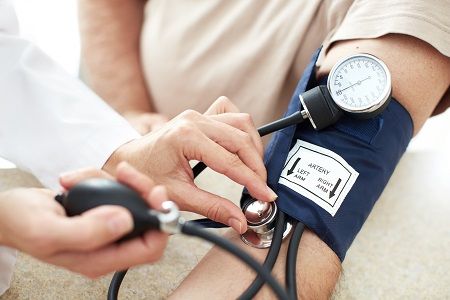Thiazide Use Increases Stroke Risk in Some Diabetics
A new study from the National Center for Global Health and Medicine in Japan has found thiazide use in diabetics with well-controlled blood pressure led to an increased risk of MACE, particularly stroke.

Despite being a common treatment for high blood pressure and congestive heart failure for decades, new research has uncovered a startling new trend about the use of thiazides in diabetics.
An analysis of data from the ACCORD and ACCORDION studies by a team of investigators from the National Center for Global Health and Medicine in Japan revealed thiazide use was associated with an increased risk of major cardiovascular events (MACE), particularly stroke, in type 2 diabetics with well-controlled blood pressure (BP).
In an effort to assess the efficacy and safety of thiazide use in patients with well-controlled BP, which investigators noted is lacking, an observational cohort study comparing whether thiazide use for BP control led to a decreased risk of cardiovascular events compared to standard treatment. Investigators identified 10,2551 high-risk type 2 diabetics in the current analysis who were either 40 to 79 years old with cardiovascular disease or 55 to 79 with anatomic evidence of significant atherosclerosis, albuminuria, left ventricular hypertrophy, or at least 2 additional cardiovascular disease risk factors.
Exclusion criteria for the current analysis included frequent or serious hypoglycemia, refusal to receive home glucose monitoring or insulin injections, serum creatinine level less than 1.5 mg/dL, or any other serious illness. BMI for patients included in the study needed to be greater than 45.
The primary outcome measure for the analysis was MACE, which investigators pointed out was a composite endpoint of cardiovascular death, nonfatal myocardial infarction, and nonfatal stroke. Secondary endpoint measures of the study included cardiovascular death, major coronary heart disease, and stroke. Investigators also pointed out all-cause death and congestive heart failure were also evaluated.
A cohort of 10,011 patients were included in the final analysis, of which 7242 were not taking thiazides and 2769 were taking thiazides. Mean systolic BP in patients not taking thiazides was 135.7 mmHg and 137.2 mmHg among those receiving thiazides.
Investigators pointed out thiazide use was associated with older age, higher proportion of women, lower proportion of white patients, lower current smoking rate, greater BMI, more complications due to hypertension and stroke, and fewer complications due to coronary artery disease and heart failure.
During the follow-up period, which lasted a mean of 7.7 years, 1776 patients experienced MACE. Of the 1776 patients, 1262 were not taking thiazides and 514 were taking thiazides.
In the entire study population, the event rate per 1000 person-years for MACE among patients taking thiazides was 24.2 compared to 22.5 in those not receiving thiazides. After multivariable adjustments, investigators not he risk of MACE was significantly higher in those taking thiazides than in those not taking thiazides (aHR, 1.12 (95% CI, 1.01-1.25), P=0.03).
Additionally, analyses revealed risk of MACE in patients reviving intensive BP control was significant higher in those taking thiazides than in those not taking thiazides (aHR, 1.49 (95% CI, 1.18-1.88), P<0.001). Risk of stroke was also significantly higher in patients taking thiazides than in those not taking thiazides (aHR, 1.34 (95% CI, 1.10-1.63), P=0.004).
“In the present study, thiazide use was associated with an increased risk of stroke in type 2 diabetic patients, specifically those receiving intensive BP control. Our findings indicate that thiazide use may increase the risk of stroke in type 2 diabetic patients with relatively low BP,” investigators wrote.
This study, titled “Thiazide Use and Cardiovascular Events in Type 2 Diabetic Patients With Well-Controlled Blood Pressure,” is published online in Hypertension.